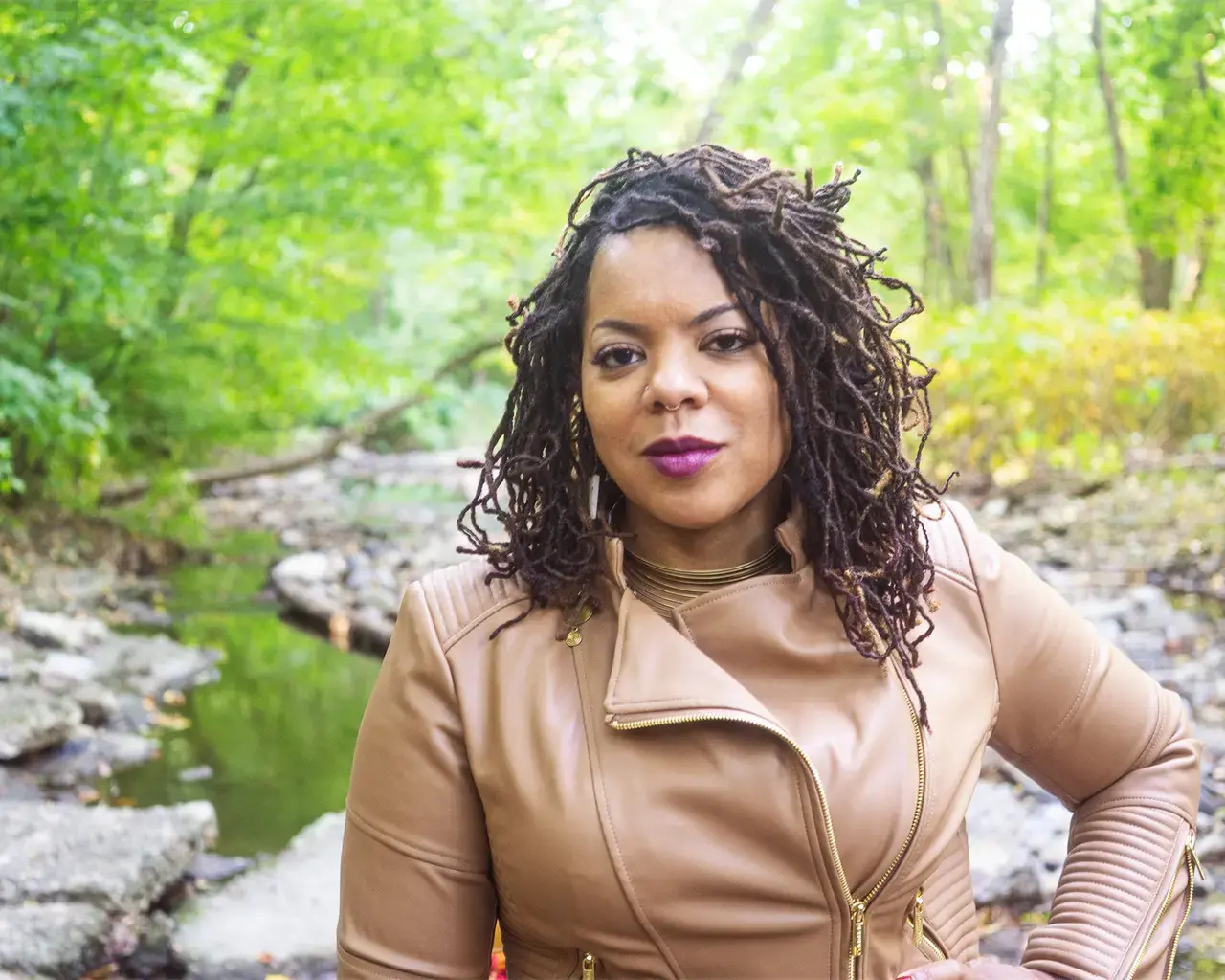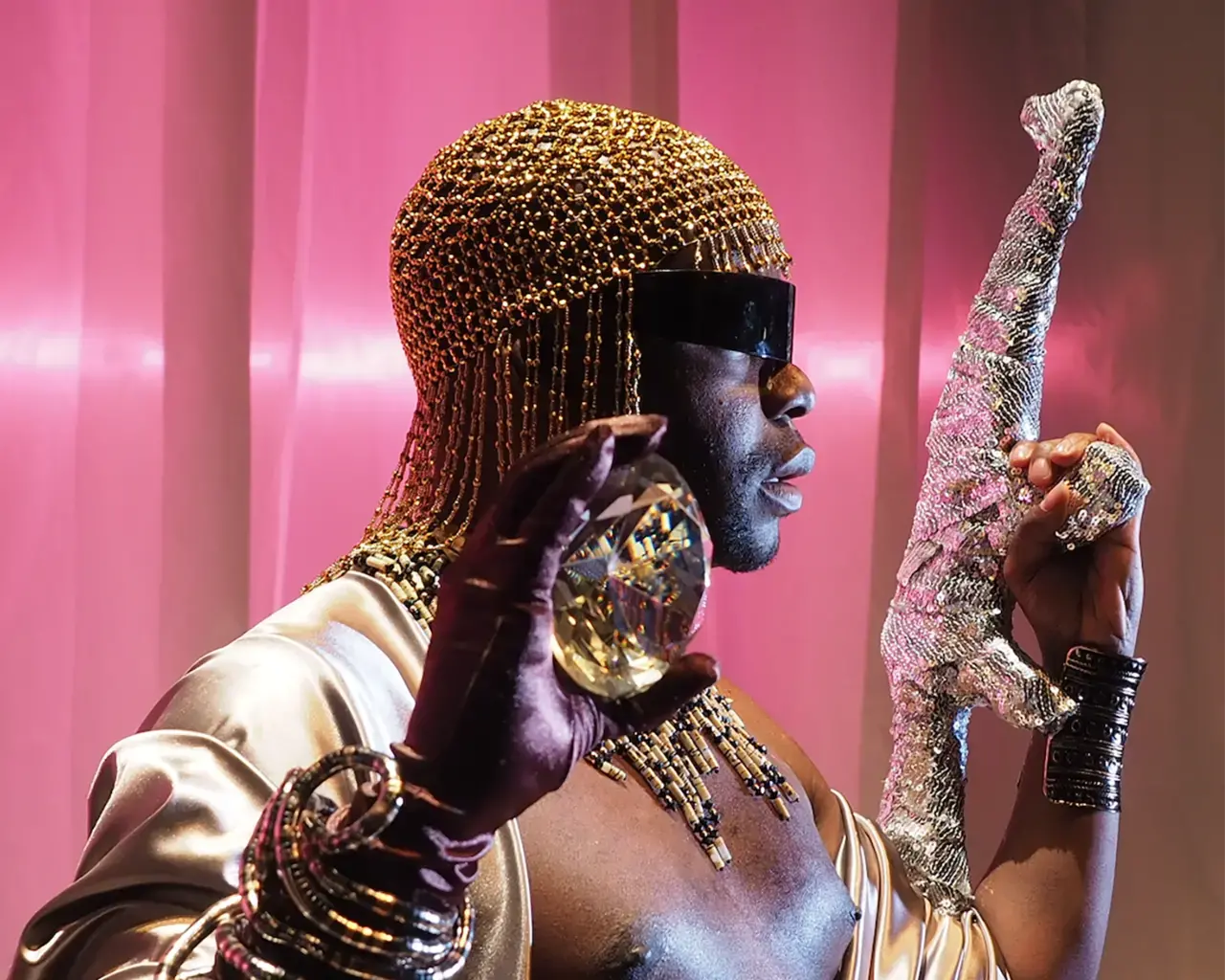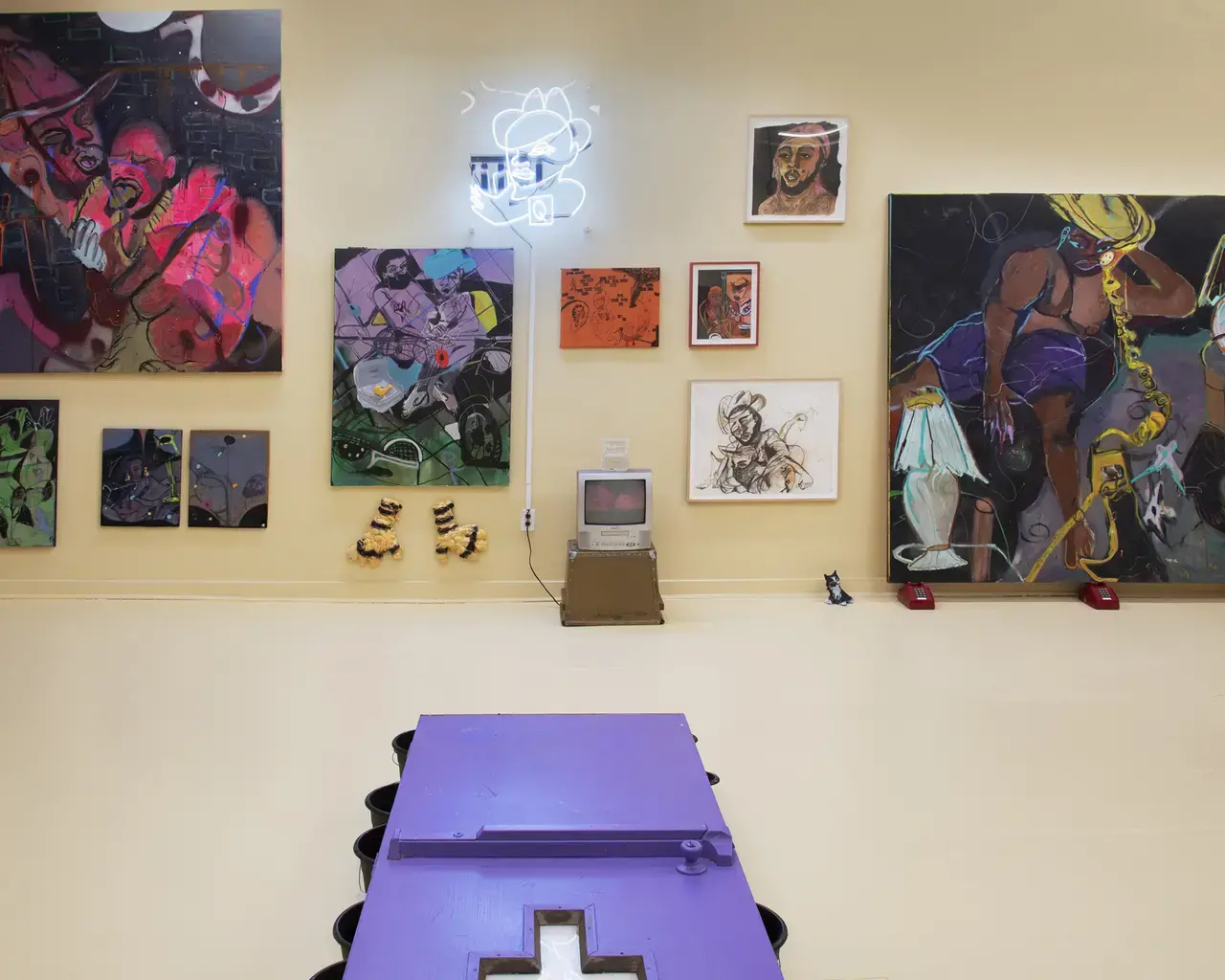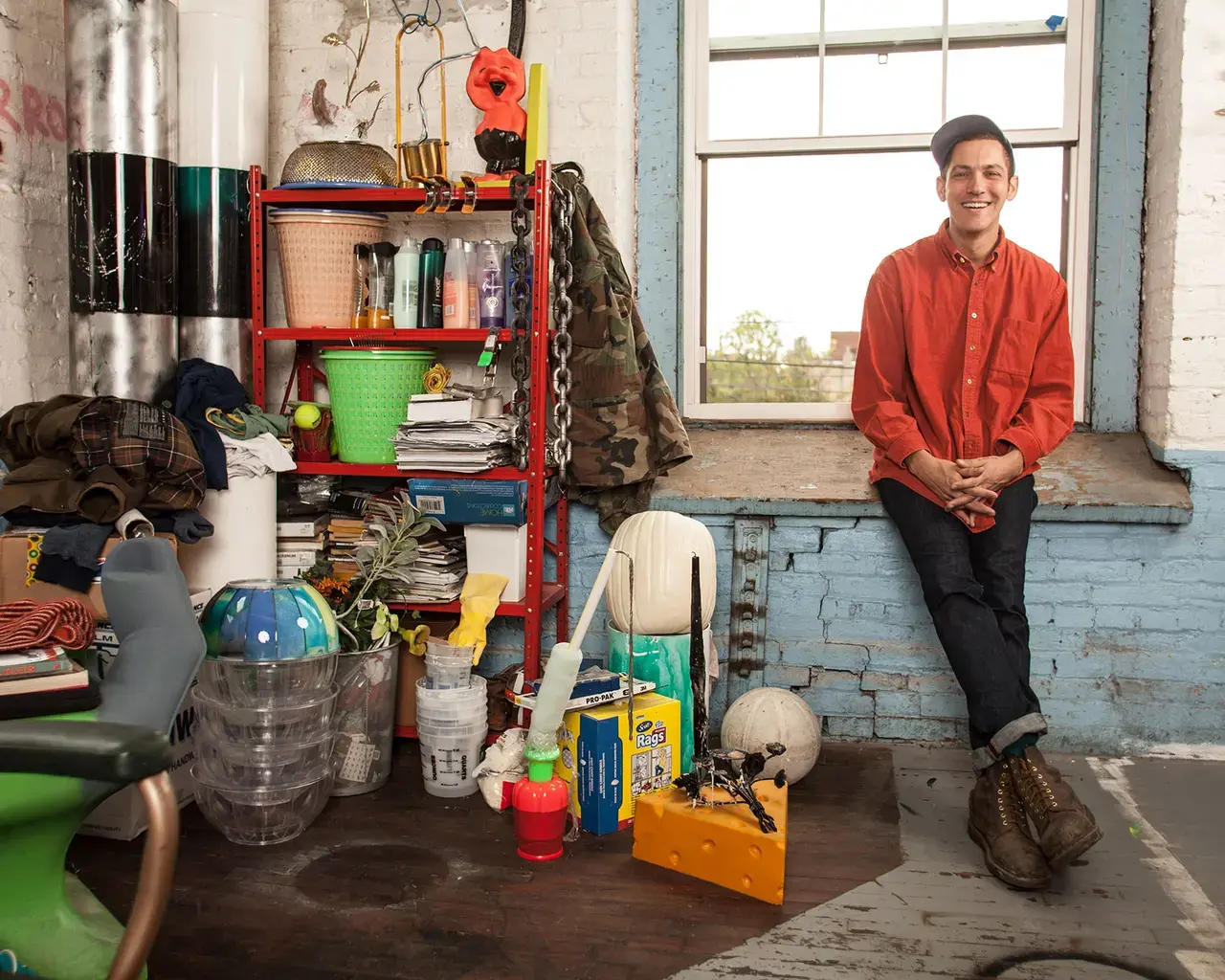
Catch up on this month’s Pew Fellows news, including new works, recognition, and interviews.
Honors and Awards
Choreographer Rennie Harris (1996) is one of eight recipients of a 2020 Doris Duke Award, a prize of $275,000 awarded to exemplary artists in contemporary dance, jazz, theater, and related fields. The website of the Doris Duke Charitable Foundation describes Harris as “the pioneer of street dance theater and a choreographer internationally known for creating a cohesive dance style, both staunchly rooted in and expanding the boundaries of hip-hop.” Harris spoke with The Philadelphia Inquirer about his career trajectory and plans for the award.
Visual artist Karyn Olivier (2019) is one of ten artists to win a 2020 Anonymous Was a Woman award. According the award website, the unrestricted $25,000 grant “enables women artists, over 40 years of age and at a significant juncture in their lives or careers, to continue to grow and pursue their work.” Read the full press release.
Interdisciplinary artist Carolyn Lazard (2019) is one of 20 winners of a Disability Futures fellowship, a new initiative from the Ford and Andrew W. Mellon Foundations. The Ford Foundation website explains that the fellowship, which includes a $50,000 grant, was created in conversation with disabled practitioners to “spotlight the work of disabled creatives across disciplines and geography and amplify their voices individually and collectively.” Read more about Lazard’s new fellowship in The Philadelphia Inquirer.

Interviews and Publications
Poet Airea D. Matthews (2020) joined WHYY’s Radio Times (listen beginning at 32:30) to share a few poems and discuss her process, the impact of a Pew Fellowship, and adapting to the pandemic. Matthews explains that many artists create “in isolation and with some degree of insularity,” so “it’s nice to get outside validation and affirmation of how you spend your life—and that’s what the [Pew Fellowship] is offering, this outside validation for the choices that I’ve made to be an artist and to be a writer.”
Black Futures, a compendium of art and writing edited by Kimberly Drew and Jenna Wortham, features essays by musician King Britt (2007) and multimedia artist Rasheedah Philips (2017), interviews with interdisciplinary artist Carolyn Lazard (2019) and visual artist and filmmaker Tiona Nekkia McClodden (2016), and art by visual artist Jonathan Lyndon Chase (2019), as well as many other Black thinkers and cultural practitioners. A New York Times review affirms that the book “succeeds in answering the incredibly heady question it poses for itself: What does it mean to be a Black person around the world, then, now or in the future?”
Saxophonist Marshall Allen (2012) leads the Sun Ra Arkestra, which recently released Swirling, its first album of new recordings in 20 years. The New York Times describes the record as “a fabulous introduction for newcomers to the Arkestra’s sonic universe, and an affirmation for old fans of how vital the band remains under the direction of the saxophonist Marshall Allen.” Listen to Allen discuss Swirling and the Arkestra’s history in a short segment on NPR.
Performance artist Jaamil Olawale Kosoko (2020) spoke with Philadelphia Magazine about his Fellowship award, the turn to digital platforms for teaching and performing, and the necessity for healing in a nation “ill with a lot of unacknowledged history and woes.” Discussing the role of institutional philanthropy in the creative community, Kosoko says that “in the end, if we’re not taking care of the artist and centering their experience, we don’t get any art from them.” In Dance Magazine, Brenda Dixon Gottschild (2017) profiles Kosoko, describing the artist as “a conundrum, a puzzle whose pieces must be mixed to match.”
Broad Street Review profiles Jesse Harrod (2020), discussing the artist’s multimedia works that explore queer collectivity and survival while challenging the hierarchies of craft materials and traditions. Harrod explains, “Queer life is often DIY from the beginning: you’re creating your own sense of community, your own definition of what is family. I approach making in that vein of experimentation; it feels connected to my survival and the survival of my community.”
Visual artist Ken Lum (2018) founded Monument Lab with Paul Farber in 2012 to explore the politics of public space through art. Monument Lab received support from the Center through grants in 2014 and 2016. A recent essay in The New Yorker explores Monument Lab’s work and the growing current of criticality towards monuments in the United States. Visual artist Michelle Angela Ortiz (2018) is quoted: “There’s so much work that needs to be done. As we move forward and think about monuments, think about what could be here or what doesn’t need to be here.” Work by visual artist Karyn Olivier (2019), in conjunction with Monument Lab, was highlighted in a feature by Metropolis magazine.

Exhibitions
Painter Jonathan Lyndon Chase (2019) has received glowing reviews for Wind Rider, a solo exhibition shown at Baby Company in New York City this fall. The New York Times characterizes the show as “a startlingly frank, exuberant exploration of the intersection of race, homoeroticism and personal identity.” A press release from Company Gallery (with which Baby Company is affiliated) explains that Wind Rider “asks us to reconsider the canonical allegory of the cowboy and challenges the defining characteristics of American masculinity…the cowboy figure morphs from a symbol of sovereign masculinity to one of intimacy and personal growth.”
Ceramist Roberto Lugo (2019) was commissioned by the New Orleans Museum of Art (NOMA) to create “Stunting” Garniture Set, which will join the museum’s permanent collection of decorative art. In an artist statementon the museum website, Lugo notes that the work “references influential members of the Black New Orleans community in American society, highlighting the visual connection between hip-hop ‘bling’ and Sèvres porcelain in NOMA’s collection.”
Photographer Gerald Cyrus (2005) was featured in the Wallach Art Gallery’s Uptown Triennial 2020 exhibition, which presents the work of contemporary artists in dialogue with the Harlem Renaissance. A virtual tour of the exhibition is available online.
Ceramist Lauren Mabry’s (2015) work was included in Jonathan Ferrara Gallery’s 24th Annual NO DEAD ARTISTS International Juried Exhibition of Contemporary Art. Mabry filmed a short studio visit for Ferrara Gallery, in which she shares works in progress and discusses her creative process. The gallery notes that Mabry’s “ceramic vessels, objects, and dimensional paintings embrace experimentation as a way to question the boundary between abstract painting, minimalist sculpture, and process art.”

Online Performances
Theater artist Geoff Sobelle (2006) collaborated with Trey Lyford and Steve Cuiffo to create Elephant Room: Dust from the Stars, which was performed via Zoom as part of the Philadelphia Fringe Festival. This sci-fi sequel to the 2012 Elephant Room follows three magicians on a journey through outer space. The New York Times praised the show as “the most resourceful, gleefully entertaining new theater piece I have seen during the pandemic,” adding that “yes, it’s possible to laugh alone in front of your computer.”
Theater artist Thaddeus Phillips (2002) is presenting Zoo Motel via Zoom through December 19, an interactive performance piece in which Phillips enlists the audience in helping him exit the motel room in which the piece takes place. “Rather than place the limitations of live theater onto a webcast,” Broad Street Review’s Josh Herren says, “they have made something surprising, magical, and theatrical in its own right.”
Visual artist Alex Da Corte (2012) directed the music video for “Dora,” a newly released single by Philadelphia-based rapper Tierra Whack. The Chicago Reader fondly described the project as “the Philly version of an ASMR video: you get the same general feeling of satisfaction, but the creepy whispering is replaced with a forceful narrative.” The video features Da Corte’s characteristic bright palate and pop-culture iconography.
Playwright James Ijames (2015) premiered a new designed-for-digital play in Steppenwolf Theatre Company’s new virtual season. What is Left, Burns is a 20-minute filmed play about two lovers reconnecting by video chat after fifteen years. “I was completely gripped,” wrote theater critic Chris Jones in a The Chicago Tribune review. “Ijames is going to be an important American writer.”
Playwright and poet Kimmika Williams-Witherspoon (2000) recently revived her 2018 performance piece From Safe to Brave, which streamed online in October and November. She spoke with Temple Now about the inspiration for the piece, the process of restaging it this year, and the role art plays in addressing contemporary issues.








